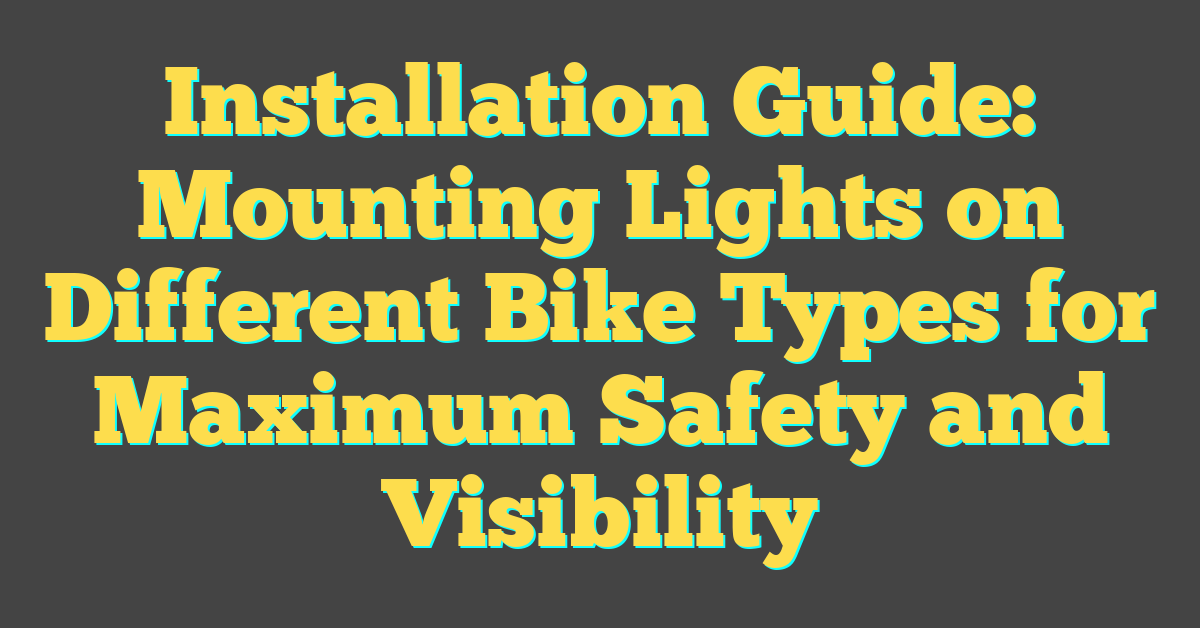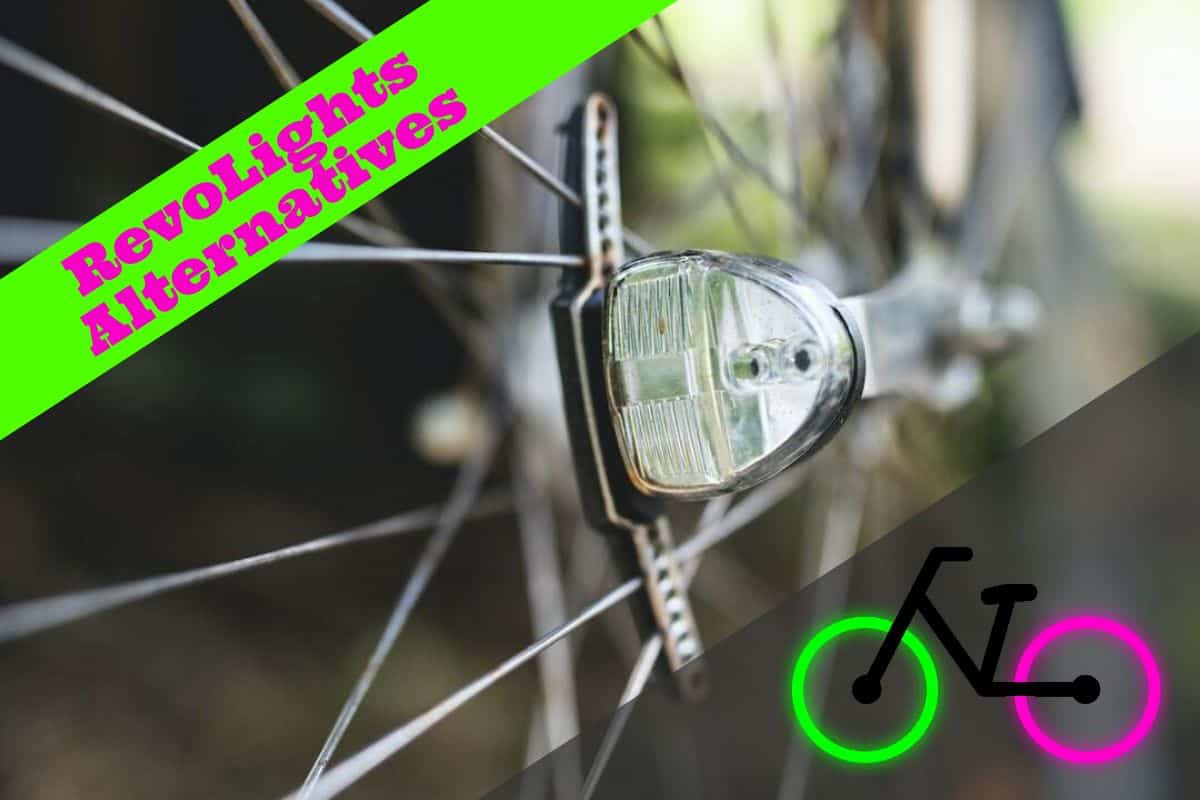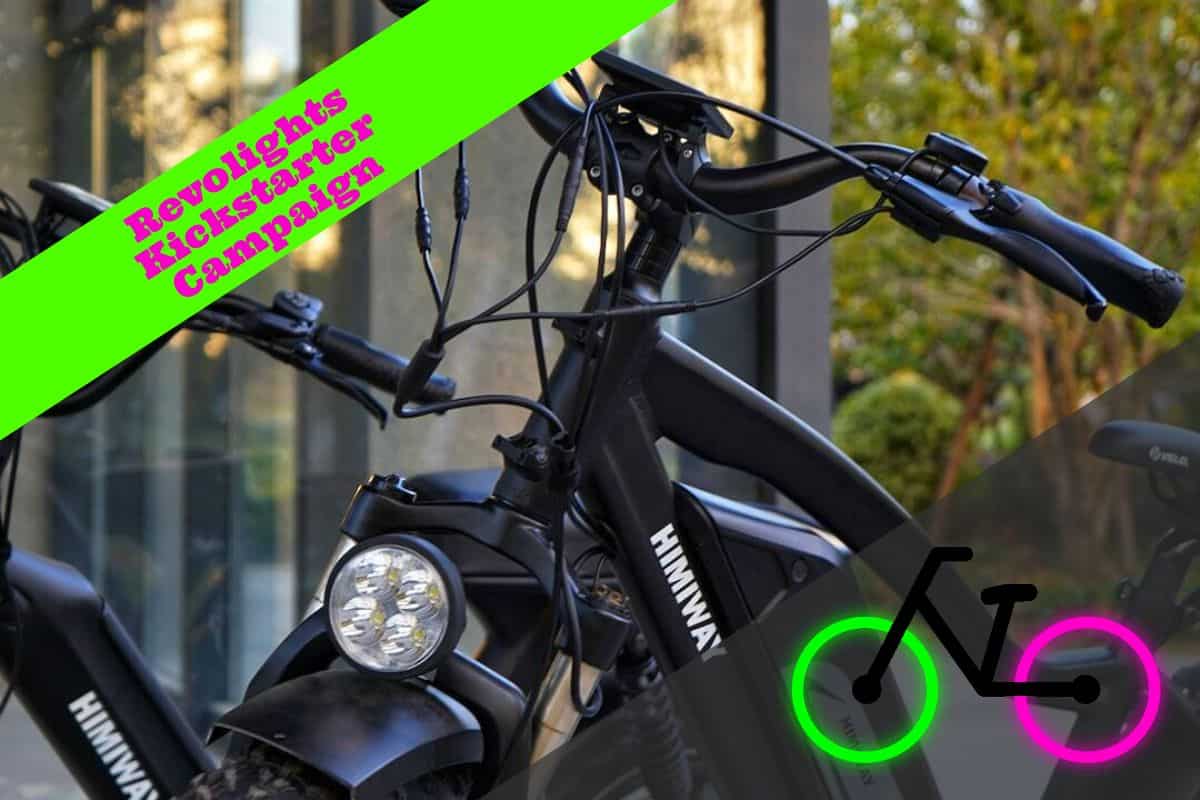Riding a bike at night or in low-light conditions can be thrilling, but it’s also risky without proper lighting. I’ve learned that having the right lights installed not only keeps you visible to others but also lights up your path for a safer ride. Whether you’re commuting, hitting mountain trails, or cruising on a road bike, mounting lights correctly makes all the difference.

Tools And Materials Needed
Mounting bike lights requires specific tools and materials to ensure secure and effective installation. Preparing these items in advance saves time and prevents interruptions.
- Bike lights: Choose lights designed for your bike type, such as handlebar lights for road bikes or helmet-mounted lights for mountain bikes. Brightness should match the intended riding conditions, measured in lumens.
- Mounting brackets: Use compatible brackets that fit your bike’s design. For example, a universal clamp for handlebars or a strap-based mount for irregular surfaces.
- Screwdrivers: Include both flathead and Phillips screwdrivers to tighten or adjust brackets during installation.
- Allen wrenches: These tools are essential for bikes with bolts or screws requiring hex keys for secure attachment.
- Zip ties: Use these for additional stability when mounting lights to unconventional surfaces or securing excess wiring.
- Adhesive pads: Place these under mounting brackets to prevent slipping or protect the bike’s frame from scratches.
- Batteries or charging cables: Ensure the lights are powered with the correct battery type or fully charged before installation.
- Cleaning cloth: Wipe down surfaces where lights or brackets are mounted to ensure proper contact and adhesion.
Having these tools and materials laid out before installation helps streamline the process, making it easier to focus on mounting the lights securely.
Preparing Your Bike For Light Installation
Getting your bike ready for light installation ensures a secure fit and optimal functionality. A little preparation makes the process seamless and boosts the performance of your lights.
Selecting The Right Lights
Choosing the right lights depends on your bike type and riding conditions. For city commuting, I recommend bright white headlights with at least 200 lumens for the front and red rear lights with flashing modes. For mountain bikes, more powerful lights, like those with 1000 lumens or above, make a huge difference on unlit trails. Road cyclists benefit from lightweight, aerodynamic lights that don’t disrupt the bike’s balance.
Rechargeable lights are excellent for regular use, while battery-powered ones are great backups for extended trips. Weather-resistant options perform better in varying conditions. Look for lights with adjustable mounting brackets to fit your handlebars or seat post snugly.
Ensuring Proper Placement
Placing bike lights correctly enhances visibility and safety. I secure the front light on the handlebar, ensuring it’s centered and angled slightly downward to illuminate the road without blinding others. Rear lights should attach securely to the seat post or rear rack, positioned to be visible from a distance.
On mountain bikes, I often mount an extra front light on my helmet for a wider field of vision. For standard bikes, adding side lights or spoke reflectors can improve visibility in traffic. After placement, I double-check alignment, especially if the bike sees rough terrain or frequent use.
Mounting Lights On Road Bikes
Properly mounting lights on road bikes ensures maximum visibility without adding unnecessary weight. Lightweight options complement the bike’s design while maintaining aerodynamic efficiency.
Front Light Installation
I suggest using a slim, high-lumen white light for the handlebars. Attach the mounting bracket to the handlebar’s center, close to the stem, for balanced weight distribution. Align the light to point slightly downward, illuminating the path ahead without blinding oncoming riders. Use an Allen wrench to secure the bracket tightly. If the brackets include quick-release levers, test flexibility before ensuring a firm lock.
Some road handlebars have narrower diameters, so make sure the bracket matches your bike’s specific size. Adding adhesive pads can prevent slipping if the handlebar surface is smooth or painted.
Rear Light Installation
Place the red rear light on the seat post for optimal visibility. Use the included bracket or rubber strap to secure it just below the saddle. Adjust the angle so the light faces directly backward and remains visible to drivers and cyclists without obstruction from bags or tools.
If the seat post is too slim or unconventional in shape, like on aerodynamic frames, use rubber shims or zip ties to stabilize the mount. Slim-profile lights keep the setup lightweight while providing adequate brightness. Always check if the light’s on/off switch is accessible before finalizing the placement.
Mounting Lights On Mountain Bikes
Mounting lights on mountain bikes requires extra attention for secure attachment and optimal performance due to rugged trails and uneven terrains. I’ve learned through my rides and countless bike setups that the right mounting technique ensures both safety and functionality.
Securing Lights For Rugged Terrain
Attach lights using sturdy mounting systems designed for shock absorption. Handlebar-mounted lights need adjustable brackets with secure clamps or bolts; I usually go for rubberized brackets as they prevent slipping on bumpy trails. For helmet lights, choose a mount with strong adhesive or velcro straps for additional stability. Rear lights on the seat post benefit from rubber bushings to reduce vibrations. Double-check each mount—wiggling loose lights mid-ride on rough terrain isn’t ideal.
« Understanding Lumens: What You Need to Know for Bicycle Lighting and Choosing the Right Brightness
Maintaining Your Bicycle Lights: Tips for Longevity Every Cyclist Must Know and Follow »
I keep zip ties handy for a little extra reinforcement during challenging rides. For example, if I’m tackling rocky trails, secondary zip tie loops on the forward lights give me that added security. Always ensure your lights can be removed easily for charging or replacements without compromising their fixed placement.
Adjustments For Optimal Visibility
Position your lights to maximize trail illumination without impairing visibility. Front lights should point slightly downward and toward the trail centerline. Personally, I align mine to enhance depth perception in shadow-heavy areas. Helmet lights help scan corners or obstacles, so aligning them with your line of sight increases precision in technical sections.
Rear lights need to face directly backward and should remain visible from a variety of angles. I prefer units with wide-beam patterns and adjustable tilt functions. If your bike has external components, like seat packs or mudguards, adjust the rear light’s height to avoid obstruction. Always test your setup by walking a few paces behind your bike to confirm visibility and alignment.
Mounting Lights On Hybrid Bikes
Mounting lights on hybrid bikes combines elements of style, functionality, and compatibility. Hybrid bikes are versatile, so lighting setups should support both city commuting and light trail riding while accommodating accessories.
Balancing Functionality And Style
Hybrid bikes often serve dual purposes, so lights should enhance both safety and aesthetics. I recommend choosing compact, rechargeable lights for a sleek look while ensuring they have at least 300 lumens for visibility in low-light conditions. For the front, mount a white light on the handlebars with a slight downward angle to provide a clear view of the road or path without blinding others. Rear lights, like red LED options, should attach securely to the seat post and be visible from all angles.
Take extra care to align lights with the bike’s natural design. Modern hybrids, with their streamlined frames, benefit from lights that don’t stick out or look bulky. Many brands offer adjustable mounting systems and minimalist designs, which work great for keeping the overall look clean.
Maintaining Compatibility With Accessories
Hybrid bikes often include additional accessories, like fenders, racks, and panniers, which can interfere with light installation. Before attaching lights, check for clear mounting spaces. For example, rear racks can block standard seat post lights. In these cases, I suggest using clip-on rear lights compatible with racks or panniers.
Front basket mounts may also limit handlebar space. If this is an issue, consider helmet-mounted lights as alternatives for the front lighting system. Zip ties or quick-release mounts can help secure lights to unconventional attachment points, ensuring they remain stable without compromising functionality or accessory compatibility. Always test the placement with all accessories in place before heading out to ensure clear visibility.
Tips For Safe And Efficient Light Installation
Proper installation ensures your bike lights work effectively, keeping you visible and your path illuminated. Here’s how I maintain safety and efficiency when setting up bike lights.
Checking Battery Life And Brightness
Powerful lights are essential for any ride. I always check the battery level before installation, ensuring it’s fully charged or has fresh batteries. Many lights come with LED indicators displaying charge status—those save time. For brightness, I test lights in a dim environment to confirm they’re functioning as intended. A front light with at least 200 lumens works well for urban areas, while 500+ lumens are better for darker roads or trails. Adjusting beam modes like steady or flashing can further enhance visibility, especially during nighttime rides or foggy weather.
Regular Maintenance And Adjustments
Lights need occasional upkeep for optimal performance. I inspect mounting brackets for signs of wear, tightening screws or straps as necessary. Dust and debris can accumulate on lenses, so I wipe them with a clean damp cloth to maintain brightness. Positioning adjustments are just as important; I re-check alignment every few weeks or after minor bumps to ensure lights point in the correct direction. For rear lights, I double-check visibility from different angles by placing my bike in a well-lit space and observing from behind.
Conclusion
Mounting bike lights properly isn’t just about convenience—it’s about staying safe and visible no matter where or how you ride. Taking the time to choose the right lights and secure them correctly can make a huge difference in your biking experience.
Whether you’re navigating city streets, tackling rugged trails, or cruising on a hybrid, a well-lit bike ensures you’re prepared for any conditions. With the right tools, proper placement, and regular maintenance, you’ll ride confidently, knowing your lights are doing their job.
Remember, a little preparation goes a long way in keeping your rides safe and enjoyable. Happy biking!




